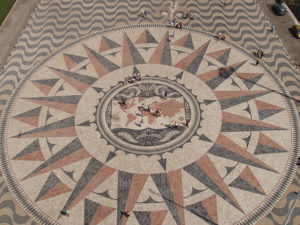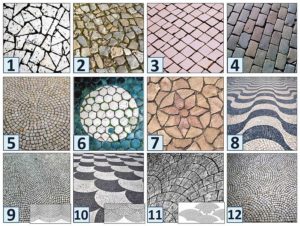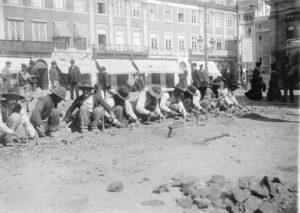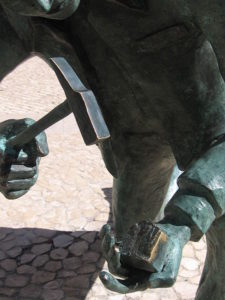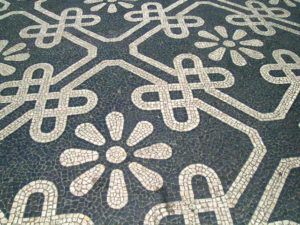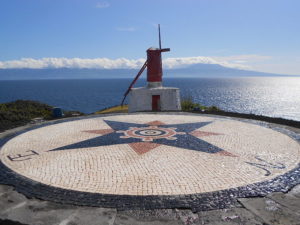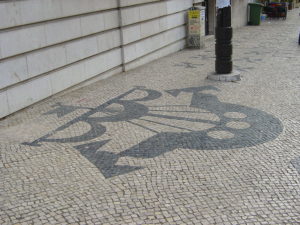Today’s blog post is taking us to western Europe and to South America, namely to Portugal and to Brazil and to a characteristic feature of public spaces in Portuguese-speaking towns and cities, a calçada portuguesa or mosaico português , or Portuguese mosaic pavement. This type of mosaic pavement can also be found in other Portuguese-speaking countries (=former Portuguese colonies).
The most characteristic feature of this type of pavement is that the paving stones are arranged in geometric or figurative patterns. These patterns are often, though not always, in black and white, and are made up of small stones, the so-called tessera, which are often irregular, and usually consist of black and white limestone (calcário negro/preto and calcário branco) or basalt (basalto). The stones are arranged on the ground according to either a linear sequence (friso, or frieze) or two-dimensional patterns (padrões). They are then hammered into place and are finally finished by a cement mix that is poured on them.
The workers who lay the pavement mosaics are called calceteiros. Once a profession performed by thousands, the number of craftsmen is dwindling nowadays, since low wages and the hard work fail to attract new apprentices. Traditional Portuguese mosaic pavements are therefore increasingly becoming restricted to conservation areas and other high-profile architectural projects due to the high cost involved in laying the stones, and the reduced longevity of the paving in comparison with other materials such as concrete (o betão) or bitumen (o betume). Another disadvantage of traditional paving is that the stones are prone to become very slippery when wet and that they may become loose and so constitute a hazard to pedestrians. However, in Brazilian cities like Rio de Janeiro traditional paving remains popular and can be found in nearly all wealthier areas.
Is there also a distinctive feature to be found in the public space of towns or cities in your country or place of residence? Tell us about it in the comments!

